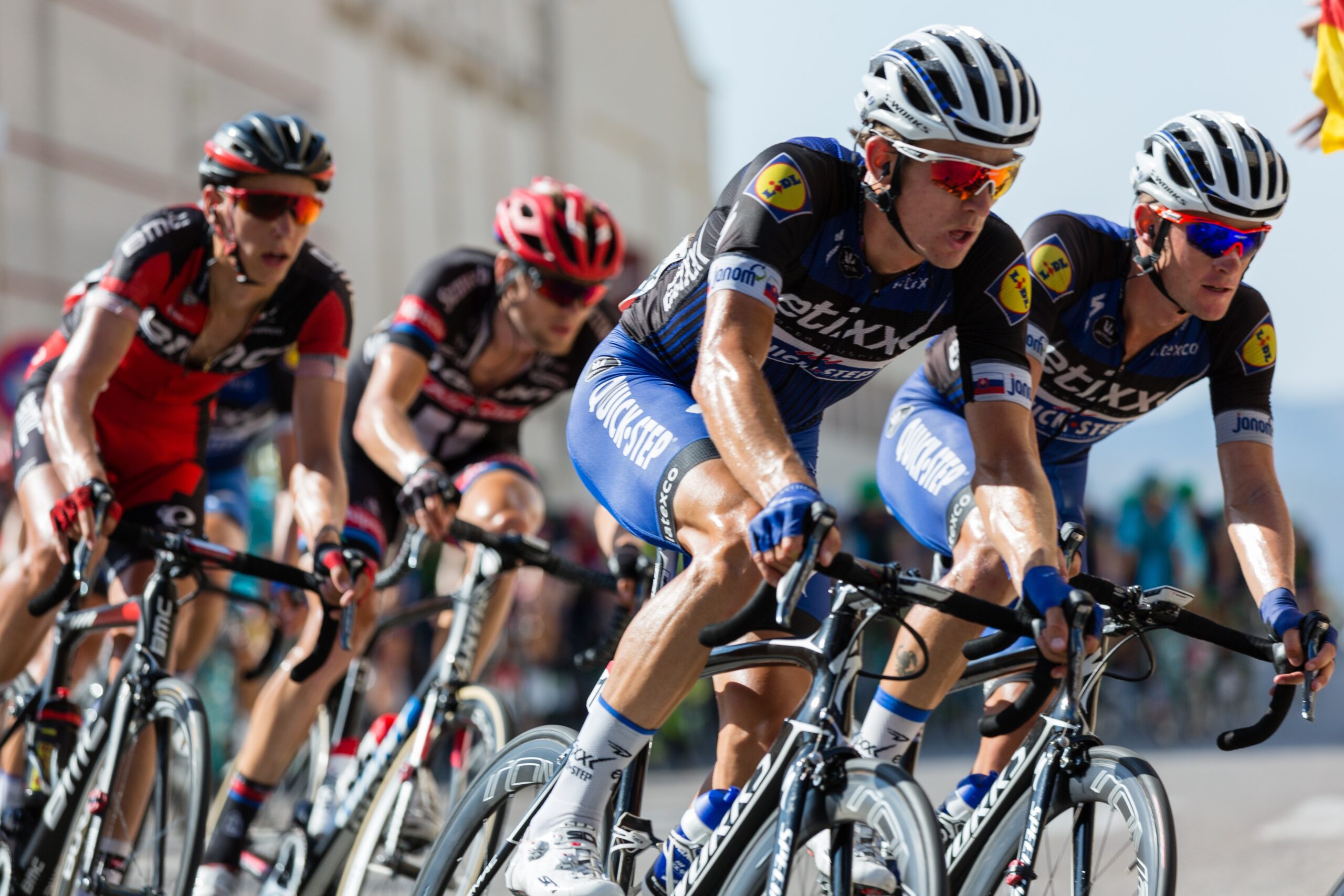The advantages of sports sponsorship are numerous and comprehensive, but at the grassroots level, they may be quite basic and provide players additional opportunities to participate by helping to build new fields, create team uniforms, and even cover travel costs for away games.
Teams have the chance to enhance the fan experience for both stadium attendees and those watching the game abroad thanks to corporate sponsorship. The money is also used to support the club’s larger community efforts, such as food bank deliveries, campaigns to address mental health problems, and programs to encourage underprivileged kids to participate in sports.
Teams simply have more resources to improve the quality of the game, at whatever level, for both the players and the viewers when they have a long-term, dependable sponsorship in sport.
A Brief History of Sports Sponsorship Marketing in the US
The earliest sports sponsorship dates back to the 19th century, when tobacco corporations used prominent baseball and cricket players’ photographs printed on tobacco packets as a marketing gimmick.
Let us go back in time to the 1920s, the height of American athletics. The first sponsored radio programs were made possible when people started to tune in to radio broadcasts of games. The first athletic event to be shown on television took place around ten years later and became obtainable on the market. The expanded reach and exposure offered by these new technologies opened up countless sponsored marketing options for both radio and television.
When collegiate bowl games were given sponsor names like the Sunkist Fiesta Bowl and the FedEx Orange Bowl in the years 1980–1990, sponsorships took off. Soon after, stadium naming rights appeared.
Because of the current craze for media and sports, sponsorships are becoming a common method of promotion for businesses. Businesses spend millions of dollars on sponsorships with athletes, teams, and events. Because of the high cost of each of these assets, the sponsorship market may be very cutthroat. Sports teams therefore always look for novel ways to improve their sponsorship marketing approach.
Types of Sports Sponsorships
Different types of sponsorship marketing exist, but they all ultimately aim to build brand equity, boost sales, and benefit both the sponsor and the team. These different sponsorships can frequently be combined to improve a sponsor’s marketing plan. They often fit into one of these groups:
Athlete Sponsorship
When a business offers financial assistance or other resources to a specific athlete in exchange for the athlete promoting the company’s name or goods, this is known as athlete sponsorship. Professional athletes are great brand ambassadors for the companies they support due to their celebrity status. With the expansion of social media, athlete sponsorships are growing dramatically in popularity. For instance, Cristiano Ronaldo has access to 538 million people via his Instagram followers.
Along with professional athletes, marketers may now approach collegiate players for endorsement deals thanks to a change in NCAA rules that took effect in 2021 and gave US student-athletes the ability to earn money from their name, image, and likeness (NIL).
New opportunities for athlete sponsorship are made possible by collectID technology. Consider a scenario where a team was holding a sponsored meet-and-greet and wanted to make sure a devoted fan would win the opportunity to speak with their favorite player. With the use of collectID technology, the club may view crucial consumer information like the profiles that are the owners of a certain player’s shirt. To increase item sales and fan engagement, clubs may also provide fans special access to information like behind-the-scenes films of players.
Team Sponsorship and The Jersey Patch
A sort of sponsorship, when a business supports a whole sports team, may include several of marketing and advertising initiatives that use the team’s platform and reputation. Sports teams may have their jerseys, balls, and shoes sponsored by businesses. It is not uncommon to see one or more company logos on a team’s shirt everywhere in the world. US professional leagues did not start using jerseys as a sponsorship asset until recently.
The NBA’s sponsorship patch program did not begin until the 2017–18 season, allowing teams to sell patches on the left shoulder of players’ jerseys to sponsors. The total value of the jersey patch initiative is already close to $250 million. For instance, Webull and the Brooklyn Nets agreed to a contract for $30 million annually, while Bibigo and the Lakers agreed to a contract worth $100 million over five years.
The 2023 season will see the start of MLB teams’ sponsorship agreements for 4-inch jersey patches. Due to the combination of patch size, longer TV shots, more games, and longer game periods, the value of these sponsorships will be even higher than NBA patches. Nielsen estimates that this exposure is worth $76,234 per game, as opposed to the NBA’s $24,816.
Due to the tremendous visibility, they provide—players are regularly followed by cameras and prominently featured in close-up shots—brands are substantially spending on jersey patches. However, after the novelty of patch sponsorships wears off, sports clubs must persuade companies to support their team over rivals and demonstrate the worth of their jersey as an asset.
The worth of a club’s jersey may be raised by converting static patches into a live communication channel. Instead of having a brand printed on their jersey, owners would be able to tap the logo with their smartphone to unlock its distinct digital identity and access exclusive features and information whenever they choose.
Event Sponsorship
Event sponsors existed long before those of athletes and sports teams. A sponsored event is advantageous to both the sponsors and the event presenter since the sponsors raise their brands’ visibility through media coverage. For instance, Apple Music is the official sponsor of the Super Bowl halftime performance, while Adidas is one of the major sponsors of the World Cup. Exclusive rights to digital, signage, and activation space may also be granted to event sponsors.
Value-in-kind, also known as in-kind sponsorship, is a well-liked strategy for reducing the event budget or enhancing events with extra value. An in-kind sponsorship offers commodities, products, or services at the event in return for brand exposure as opposed to financial sponsorships that give money or investments. For instance, a beverage firm can offer beverages in exchange for more exposure, or a hotel would offer team lodging in return for exclusive advertising among participants.
Stadium or Arena Naming Rights
A firm pays for a stadium’s naming rights. This kind of sponsorship marketing frequently involves the option to organize events and promotions, as well as major visibility through signs and advertising. In 2021, cryptocurrency firm Crypto.com agreed to a 20-year contract for $700 million to purchase the naming rights to the former Staples Center.
Sponsored media
A corporation offers financial assistance or resources to the media organization as part of a marketing relationship in exchange for the media entity promoting the company’s brand or products on its platform and to its audience. Radio and television are still the two most common kinds of media advertising, but nowadays, advertisers may also be found in podcasts, posts on social media, and streaming services.
Pros and Cons of Sponsorship
Both the sponsoring brand (athlete, event, or organization) and the entity being sponsored (e.g., these entities) may benefit from or suffer from sponsorship in different ways. Here are a few pros and cons of sponsorship:
Pros
- Brand Visibility – Through sponsored events, athletes, or organizations, sponsors can get in front of a large and diversified audience, boosting brand visibility.
- Credibility and Trust – From the perspective of consumers, a sponsor’s credibility and trustworthiness can be increased by being linked to reputable athletes or events.
- Engagement of the Audience – Sponsors have the chance to interact with ardent fan bases, creating emotional bonds with potential clients.
- Product association – Through sponsorship, companies can associate their goods or services with admirable traits like achievement, grit, and athleticism.
- Financial assistance – Sponsorship agreements give athletes, teams, or events financial assistance, allowing them to spend money on participation, facilities, and preparation.
- Global Reach – Major sporting events draw spectators from around the world, giving sponsors the ability to tap into a wide market.
- Marketing Activation – Through a variety of marketing initiatives, including signage, social media campaigns, and interactive events, sponsors can increase the return on their investments.
- Data & analytics – With the use of contemporary tools, sponsors can gather data and assess the success of their sponsorships, facilitating data-driven decision-making.
Cons
- Financial Risk – Sponsors run the risk of not getting a good enough return on their investment. The sponsor could not get the benefits they were hoping for if the sponsored organization performed poorly or received bad press.
- Over commercialization – Excessive sponsorship and advertising may cause sports to become too commercialized, which some fans may find repulsive. It may diminish the sport’s integrity.
- Ethical dilemmas – When promoting specific sponsors or goods, athletes, teams, and organizations must carefully evaluate the ethical ramifications, especially if those endorsements go against their ideals or the public’s opinion of them.
- Dependence – If athletes or teams depend too much on sponsorship money, it might leave them vulnerable if the partnerships are canceled or not renewed.
- Competing Interests – Conflicting sponsorships within the same sport or organization might cause problems due to competing interests. Conflicts of interest and brand confusion may result, for instance, if two rival companies support separate clubs in the same league.
- Strategic Alignment – Finding the ideal sponsor who complements the goals and reputation of the sponsored company can be difficult. Sponsorships that are not right might have bad results.
- Oversaturation – In certain situations, sponsors and commercials at sporting events may be too prevalent, which lessens the effect of individual sponsors.
- Regulatory Challenges – Sponsorship agreements may be subject to legal and regulatory constraints, such as disclosure obligations and adherence to advertising standards.
Conclusion
Athletes, teams, fans, and brands now enjoy a wealth of advantages and possibilities thanks to sponsorship and endorsements, which have completely changed the sports environment. However, as the sports sector develops, it also poses difficult ethical problems that demand careful attention. In the end, it is indisputable that sponsorship and endorsements have a significant influence on how we see and interact with our favorite sports and individuals.





